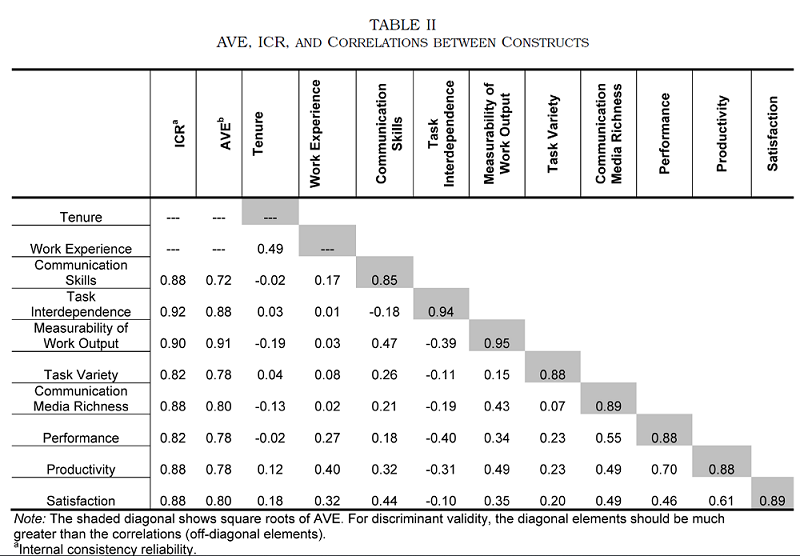In Africa, one can imagine how people lived before the start of the industrial revolution, even before the centralization of the means of production forced people to gather at the same time in one place for working together. But it was the development of industry that shaped the way to which we are accustomed today. Only now, many of us gather in the morning at 9 am not to collect cars together on the conveyor, but rather in the office, where we will write letters to each other all day by e-mail, messages in instant messengers, and discuss something in the meeting rooms and by phone. However, today there are more and more types of work, where without the physical presence of a group of people in one place and at the same time you can get the desired result of labor. In many areas of business, this has already become the norm: international corporations successfully work as distributed teams and some of them think about using the remote work option. IBM, for example, recently announced that up to 40% of employees work partly or completely remotely.

The main business of our company ICL Services is the provision of a wide range of IT services to various customers around the world. A fairly large part of our specialists provides remote IT infrastructure support to European and Asian companies. In recent years, we have been growing very well and adding new customers to our portfolio, expanding the range of services in various languages and time zones. To do this, we regularly open new offices and now our specialists work in Belgrade, Voronezh, Moscow, Kazan and Vladivostok. Last year, we came to the understanding that for further effective development, we, like many other IT companies, need to learn how to work effectively not only from distributed offices, but also involving remote employees working from home or small coworking.
In order to minimize the risks of implementing remote work, we decided to go simultaneously in two parallel ways. On the one hand, try to study the accumulated experience of other companies and published scientific articles on this topic, and on the other hand, by trial and error, by launching a pilot project for a small group of employees and collecting feedback from both employees and their managers. For the pilot project, we evenly distributed the candidates as according to the forms of remote work:
- constant
- scheduled
- situational
and at the place of work:
- at home
- from coworking
- from the location of the client.
Looking ahead, I can say that the pilot project has not yet been completed, but as soon as feedback is collected, we will carefully analyze the experience gained and share it in a separate article.
The difficulties of distributed work
The first thing we needed to think about when starting a project was the problems we would face. The most popular in the literature were the following difficulties switching to remote work:
- asynchronous communications and tasks;
- rather “dry” formal communications;
- less social, interpersonal, communication;
- more difficult to organize communication in the project;
- more difficult to get a clear picture of what is happening;
- more difficult to determine the real workload of employees;
- fewer opportunities to influence employees (motivate, persuade, control timing);
- difficulty transferring knowledge.
Most of these difficulties can be attributed to any form of work in distributed teams, which is far from new for us, and advising experience has already been gained to solve them. Line managers who have employees in other offices know that they need to pay more attention to communication, often schedule individual online meetings or simply call on the phone, spend more time on this and sometimes discuss not only “dry” working moments, but also those topics that might arise during lunch or over coffee. Project managers, in turn, have long been using virtual workspaces such as SharePoint or Teams to organize teamwork. All meeting rooms are equipped with facilities for online meetings, and teams can easily connect remote employees if required. Yes, all these difficulties can be aggravated in the case of isolated work at home, but these are problems inherent in any distributed work.

Homework Research
In a study published by the MIT Sloan Management Review (Mulki, Bardhi, Lassk, & Navaty-Dahl, 2009), scientists identified the following factors that managers should pay special attention to when organizing homework:
- Striking a balance between work and personal life.
- Overcoming the feeling of isolation at work.
- Compensation for the lack of personal communication.
- Compensating for the lack of opportunity to showcase your work achievements.

The balance between personal life and work
Maintaining balance is important for all employees, but those who work from home experience additional difficulties. On the one hand, they can work more, and in this study and in many others, it was noted that workers often work longer and longer than in the office. This is often due to the fact that there are fewer distractions at home, it is easier to concentrate, so that you do not need to go to work, you can start working earlier and do not need to go home from work. As a result, it is harder for an employee to establish a normal working rhythm. The work schedule begins to constantly change, then a lot of time is devoted to work, then for a long time the employee can not cope with procrastination. Another major factor is household irritants and family members. Pets, friends, neighbors, and households see that you are at home and may require attention. It is difficult for an employee working at home to separate work time from personal time, and he easily begins to be distracted by solving everyday problems during working hours.
Feeling of isolation
It is good if your employee has an active social life and does not feel isolation in his personal life. But the homeworker does not have the opportunity to get up, go to pour coffee and talk with colleagues, who also decided to take a break. It is very difficult for a remote employee to establish normal social contacts with colleagues. Even if you organize very good working communications, then usually this is not enough for these communications to become a little more personal, personal, social. In this study, managers are given recommendations to pay special attention to informal communication, to develop social communications at work, to celebrate some dates and events together.
Lack of personal communication
Personal communication is not enough because the basis of communication is work issues. At the office, people somehow begin to share personal information, talk about how they spent the weekend or where they plan to go on vacation. In the case of remote work, it is more difficult for employees to overcome this barrier, and managers themselves should set a good example in this case and initiate more personal communication.
Performance Demonstration
In the office, employees communicate not only with those with whom they should directly interact on work issues, but also with many other colleagues. You can share your successes not only within your team, but also with employees from other departments or heads of other departments. In the case of a virtual team for a remote employee, the leader often replaces almost the entire organization. He should be aware of this problem and communicate to other employees information about the success of the remote employee. Talk about his unique skills and knowledge so that other employees, if necessary, could turn to him for help or information on those areas where he is strong.

Another interesting study conducted by Canadian scientists (Neufeld & Fang, 2005) was to identify factors that influence the efficiency and effectiveness of homeworkers. In this study, scientists concluded that individual factors, such as marital status and gender, do not affect work performance. And the greatest influence is exerted by social factors (communication with colleagues, managers and family) and situational factors (availability of resources and the absence of distractions).
Another study by Canadian scientists (Turetken, Jain, Quesenberry, & Ngwenyama, 2011) was devoted to identifying the impact of individual, organizational, working and technological factors on the performance of homeworkers. As a result, they found that the length of service in the organization does not have a significant impact on employee satisfaction or productivity, and work experience in this position, on the contrary, has a strong influence on job performance and satisfaction. The measurability of the results of work, communication skills and the availability of a variety of communication channels largely determine the success of organizing homework.

conclusions
If you try to summarize all these materials, it turns out that professionally experienced employees who already know their job well, socially mature and with well-developed communication skills can be transferred to remote work. For ourselves, we have formulated a list of positions for which remote work is acceptable, formulated a policy of remote work in the company, guidelines for linear and functional managers, requirements for the workplace of a remote employee, and updated the relevant processes in the company. We developed trainings for employees and managers, where we introduce them both to the process of transferring to remote work and to the socio-organizational issues that were highlighted above.
Perhaps the offices of the future will be more reminiscent of corporate universities, where there will be mainly two categories of employees: interns who are only acquainted with the profession and their mentors. Most employees will be able to work from distributed and comfortable locations for them, united by small regional offices on the principle of hub and spoke.
Literature:
Mulki, J., Bardhi, F., Lassk, F., & Navaty-Dahl, J. (2009). Set up remote workers to thrive. MIT Sloan Management Review, 51 (1), 63–69.
Neufeld, DJ, & Fang, Y. (2005). Individual, social and situational determinants of telecommuter productivity. Information and Management, 42 (7), 1037-1049. doi.org/10.1016/j.im.2004.12.001
Turetken, O., Jain, A., Quesenberry, B., & Ngwenyama, O. (2011). An Empirical Investigation of the Impact of Individual and. IEEE Transactions on Professional Communication, 54 (1), 56–67.